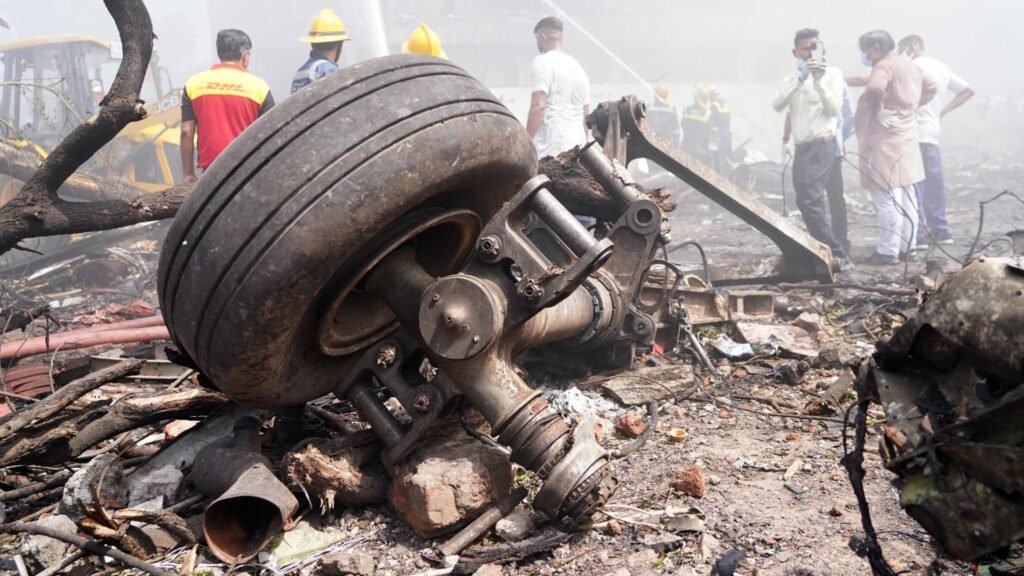This image captures the remnants of an Air India aircraft, headed to London’s Gatwick Airport, that crashed shortly after takeoff from Ahmedabad, India on June 12, 2025.
Adnan Abidi | Reuters
On Thursday, an Air India plane carrying 242 individuals to London crashed just moments after departing from western India. Tragically, only one person survived the incident involving the Boeing 787 Dreamliner.
This crash marks the first incident involving a Boeing 787 Dreamliner and is considered one of the deadliest plane crashes in recent years.
Here are the key details:
What type of aircraft was involved?
The aircraft was a Boeing 787-8 Dreamliner, a widely-used twin-aisle jet designed for long-distance flights.
This particular plane took its first flight in December 2013 and was delivered to Air India in January 2014, according to data from aviation analytics firm Cirium.
As of Thursday, Air India operated 34 of these jets, including the one that crashed, with plans to add at least 20 more to their fleet. The airline has been upgrading its inventory with modern jets from Boeing and competitor Airbus, while enhancing cabin luxury.
Globally, over 1,100 Dreamliners are operational.
What occurred during this flight?
Initial reports indicate that communication with the aircraft was lost at 1:38 p.m. local time, less than a minute following takeoff from Ahmedabad’s Sardar Vallabhbhai Patel International Airport, as per flight-tracking service Flightradar24.
The plane reached an altitude of 625 feet, while the airport’s elevation is around 200 feet, Flightradar24 observed.
The reasons for the plane’s sudden descent before crashing into a residential area, where additional fatalities have been reported, remain unclear.
Aircraft accidents can result from many factors, including mechanical failures, animal strikes, or pilot mistakes, often involving multiple issues.
What will the investigators examine?
Investigators will sift through the wreckage to locate the aircraft’s black boxes, which include both cockpit and flight-data recorders. These will provide essential insights into the events leading up to the crash.
They will assess various factors, including the airline’s maintenance logs, the pilots’ actions during the flight, the aircraft’s position, wing configurations, pilots’ training, their recent rest periods, and the weather on that hot day, with temperatures near 100 degrees Fahrenheit.
Footage from the incident, especially videos capturing the aircraft’s takeoff from Ahmedabad, will also be scrutinized.
In accordance with international standards, the investigation will be led by India, with participation from Boeing, GE Aerospace (the engine manufacturer), and U.S. federal crash investigators.
Have there been previous concerns about Dreamliner manufacturing and quality? Are they connected?
While it’s too soon to ascertain the exact cause of the crash—final reports may not be released until next year—some experts downplayed potential manufacturing issues, suggesting that the aircraft’s more than a decade in service tempers such concerns.
“I don’t believe this incident stems from manufacturing or production flaws,” stated Jeff Guzzetti, a former air safety investigator with the U.S. National Transportation Safety Board and the Federal Aviation Administration.
He added that it’s premature to identify the specific issue or issues, as air crashes frequently involve several failures.
“It seems the airplane took off without incident but failed to gain altitude for some reason,” he remarked.
Experts noted that, although Boeing has faced challenges with the Dreamliner previously, no direct links to the current incident are evident.
A whistleblower claimed last year that Boeing had compromised on production standards to address bottleneck issues, allegedly causing “excessive stress” on vital components of the aircraft. Boeing has denied these claims.
Deliveries of the Dreamliner were also halted for about a year until mid-2022 due to manufacturing defects causing spacing issues in the fuselage.
After the Dreamliner began service in 2011, inspections were mandated due to concerns over possible lithium battery fires.
What does this incident signify for Boeing?
Boeing CEO Kelly Ortberg, who took charge in August, is striving to steer the company, a leading U.S. exporter, away from scrutiny over several safety and manufacturing crises.
This comes as Boeing was still recovering from two previous crashes involving its popular 737 Max jets, alongside a recent failure of a new Max 9 model.
The aftermath of this crash will depend on the findings of the investigation. Despite recent events, demand for new aircraft remains strong, and airlines continue to place orders, recognizing that the waiting period can extend for years.
According to Wolfe Research, “we don’t foresee significant direct effects on financial performance, but this will certainly dampen momentum until clear information becomes available.”
“We anticipate minimal impact on production rates due to this incident, and any effect on demand is expected to be very slight and localized as well,” Wolfe noted. “A slight risk may exist for the certification process of the upcoming 777X model, but it’s too early to gauge that risk.”
Boeing currently has 900 additional Dreamliner orders in its pipeline, as stated on its website.


